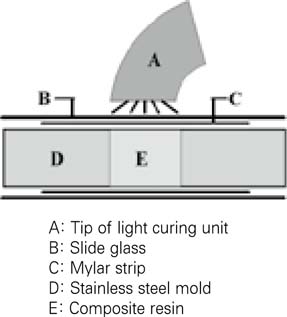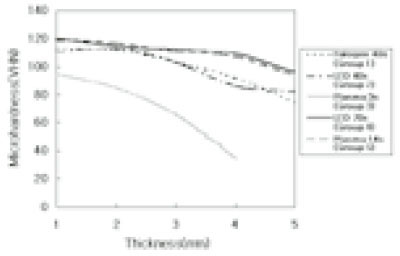Articles
- Page Path
- HOME > Restor Dent Endod > Volume 28(2); 2003 > Article
- Original Article Polymerization ability of several light curing sources on composite resin
- Hye-Jin Shin, Jin-Woo Kim, Kyung-Mo Cho
-
2003;28(2):-161.
DOI: https://doi.org/10.5395/JKACD.2003.28.2.156
Published online: March 31, 2003
Department of Conservative Dentistry, College of Dentistry Graduate School, Kangnung National University, Korea.
- Corresponding author (drbozon@kangnung.ac.kr)
Copyright © 2003 Korean Academy of Conservative Dentistry
- 824 Views
- 0 Download
- 1 Crossref
Tables & Figures
REFERENCES
Citations
Citations to this article as recorded by 

- Power density of light curing units through resin inlays fabricated with direct and indirect composites
Hoon-Sang Chang, Young-Jun Lim, Jeong-Mi Kim, Sung-Ok Hong
Journal of Korean Academy of Conservative Dentistry.2010; 35(5): 353. CrossRef
Polymerization ability of several light curing sources on composite resin


Fig. 1
Schematic drawing of constructed device used to prepare resin sample
Fig. 2
Microhardness of each light source at each thickness
Fig. 1
Fig. 2
Polymerization ability of several light curing sources on composite resin
Experimental groups designated with different light curing units and curing times
*: Watts × seconds/cm2 = Joules/cm2
Means and standard deviation (SD) of microhardness
Significance testing of mean microhardness of each light source within each depth
*: not statistically significant (p > 0.05)
Table 1
Experimental groups designated with different light curing units and curing times
*: Watts × seconds/cm2 = Joules/cm2
Table 2
Means and standard deviation (SD) of microhardness
Table 3
Significance testing of mean microhardness of each light source within each depth
*: not statistically significant (

 KACD
KACD





 ePub Link
ePub Link Cite
Cite

